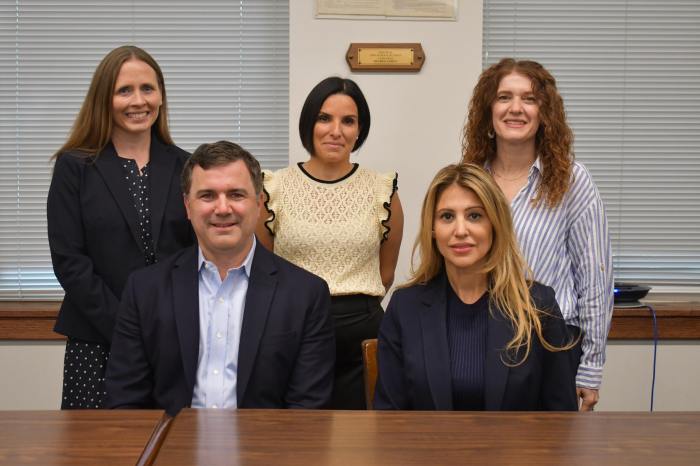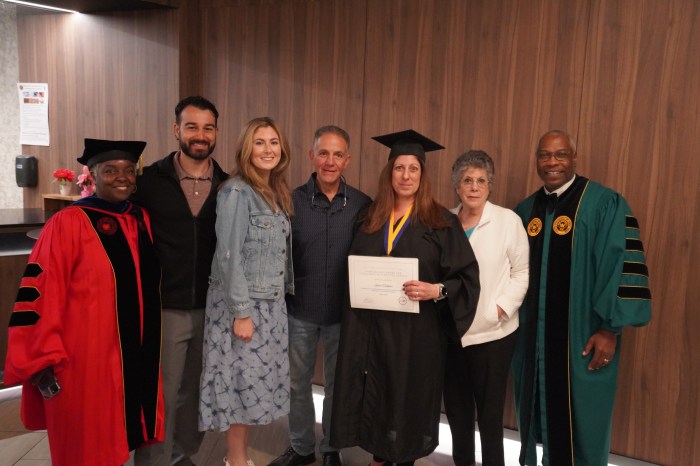
While the first half of the April 17 Board of Education meeting featured an impeccable performance by Daly Elementary School violinist Justin Sung and a presentation of certificates to the Schreiber High School cheerleaders for their performance in the inaugural season of competitive cheerleading, the second half of the meeting took a more serious tone as the board discussed the final recommended 2018-19 school budget and the current state of New York State testing.
At the meeting, the Port Washington Board of Education unanimously approved the final 2018-19 proposed budget totaling $155,938,460 to be voted on by registered residents on May 15 from 6 a.m. to 10 p.m. in the Weber Middle School all-purpose room.
The proposed budget reflects a $4.7 million budget increase, and due to the recent tax cuts, Assistant Superintendent of Business Mary Callahan explained that the levy does not fully fund the budget and so to bridge the gap between what the tax levy allows for and what the budget needs, the district will use money from the school’s unassigned fund balance, retirement reserve and debt service fund.
While Superintendent of Schools Dr. Kathleen Mooney explained that the school district does not have enough funds to support all requested staffing positions, positions included in the final proposed budget are a 0.8 special education teacher at Salem, 1 elementary teacher at Weber, 1 bilingual kindergarten teacher (only to be realized if the need arises), a 0.4 world language teacher at Weber, 1 math teacher at Schreiber and 1 administrator for literacy in grades three through six. Mooney explained that if additional savings materialize due to unrealized enrollment in budgeted teaching positions for kindergarten and bilingual positions, the funds will be allocated in priority order from a health/PE teacher at Weber, a district-wide facilities and grounds keeper and a social studies teacher at Schreiber.
The Port Washington School District received $600,000 more in state aid this year than last, having received an additional $300,000 over spring break.
“I just want to take a moment to publicly thank the tireless efforts on our behalf on getting more state aid and continuously trying to get us more money in other areas—Senator Phillips and Assemblyman D’Urso,” said President of the Board of Education Karen Sloan. “They played a big role in the money we’ve received thus far and I just spoke with Senator Phillips’ office today and they are continuing to try to find other funding for us. I must thank the community for all of their efforts in coming forward and the Legislative Task Force for getting the word out to all of you and all of the letters that were sent to legislators.”
The board’s conversation later turned to the recent ELA assessments for grades three through eight. Mooney explained that the opt-out rate for this year’s test was 27 percent in comparison to last year’s 30 percent.
“We would like to have a discussion about stepping up to make a formal statement about the testing,” said Sloan, who then explained to the community that the members of the board and superintendent of schools take an oath to uphold the laws of the state education department. “There are certain limits as to what we can say or do regardless of how we might personally feel about it. That being said, that doesn’t mean we can’t voice our concerns and disapproval of a lot of things going on in state education today including the testing.”
Other members of the board including, Larry Greenstein and Emily Beys, expressed their concerns about New York state testing.
“It appears that although the state of education department over the years, promised that they’ll fix the problems, they get worse every year, so I do think that we have an obligation to voice our displeasure,” said Greenstein.
“From the way I understood it, the particular round of testing that happened this week, the second day took longer to finish than anticipated and that was because the state eliminated the third day, but instead of taking material and eliminating it, they kind of condensed it into the second day and that probably did create extra stress for our students,” added Beys.
Board members Elizabeth Weisburd and Rachel Gilliar also pointed out the time the testing takes away from classroom learning.
“My understanding of assessments is they are to be able to inform instruction to improve our curriculum to improve our teaching practices,” said Weisburd. “Unfortunately we’ve heard time and again, and more this year, that the inappropriateness of the questions on the test and the inappropriateness of the testing in general.”
“If you are going to test our children, you need to be testing them with purpose,” said Gilliar. “You need to have these tests be giving us data that is useful for having the children learn more, evaluating our teachers. I think part of the amazing part of that education is the magic that happens in an individual classroom when you have a gifted teacher teaching a class and putting their own individual spirit into that classroom and this testing regimen gets rid of and eliminates the ability for teachers to do that as much and that really troubles me.”
What did you think of this article? Share your thoughts with me by email at cclaus@antonmediagroup.com.

































